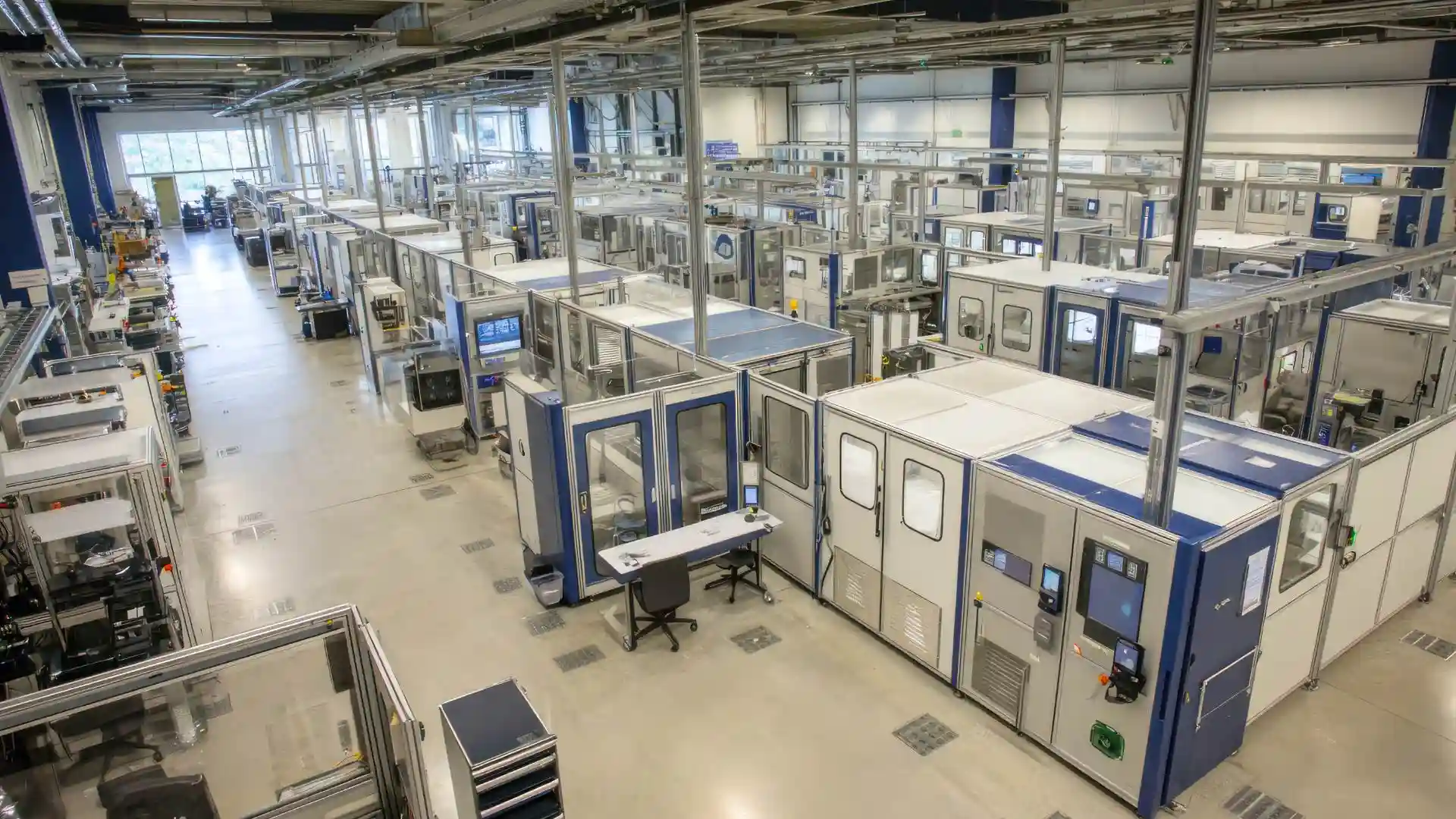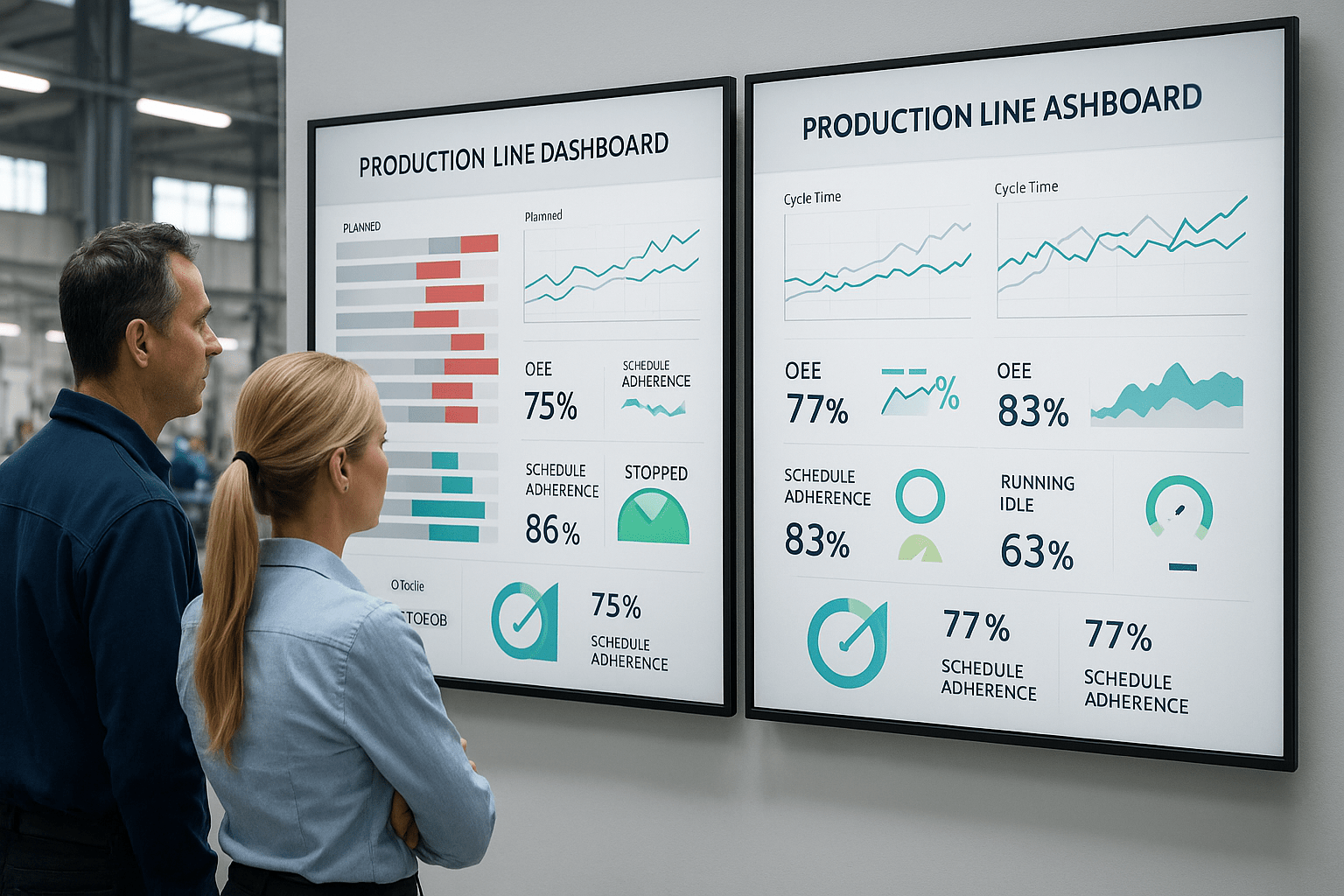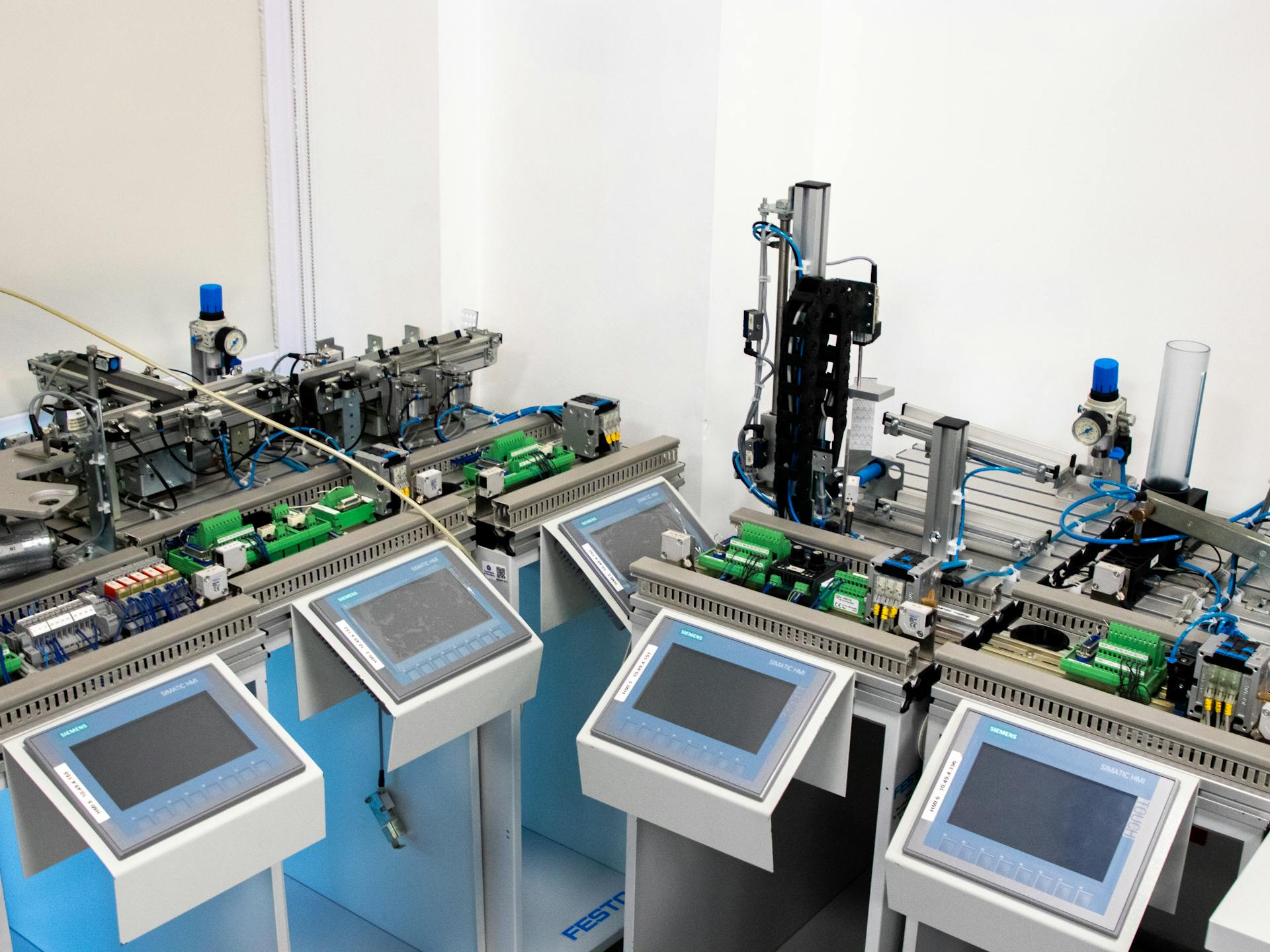In today’s fast-paced manufacturing landscape, particularly for high-mix, low-volume (HMLV) producers, the ability to make informed, timely decisions is critical to staying competitive. Manufacturing Execution Systems (MES) like ProcessIQ are revolutionizing how manufacturers access, analyse, and act on data from the shop floor. By replacing outdated paper-based processes with real-time, data-driven insights, MES software empowers stakeholders to optimise operations, enhance quality, and drive continuous improvement. This blog explores how MES software, specifically designed for complex configure-to-order markets, enables better decision-making through seamless data integration, real-time visibility, and actionable analytics.

instructions and quality data, providing insights into your shop floor performance.
The Challenge of Informed Decision-Making in High Mix Low Volume Manufacturing
High-mix, low-volume manufacturing environments, often referred to as the “Repeater” paradigm, are characterised by frequent product variations, complex production processes, and smaller batch sizes. Unlike high-volume “Runner” or one-off “Stranger” production models, HMLV manufacturers face unique challenges:
- Complex Workflows: Managing hundreds or thousands of product variants requires dynamic production documentation that can adapt to frequent changes.
- Quality Compliance: Ensuring traceability and embedding quality controls in the build process is essential to meet regulatory and customer requirements.
- Data Silos: Disconnected systems and paper-based workflows create gaps in information flow, making it difficult to compare planned vs. actual production metrics.
- Time Sensitivity: Delayed access to production data can lead to missed opportunities for addressing inefficiencies or quality issues.
These challenges make decision-making a daunting task for production managers, quality engineers, and executives. Without real-time insights, decisions are often reactive, based on incomplete data, or delayed until issues escalate. This is where MES software steps in, transforming raw shop floor data into a strategic asset for informed decision-making.
How MES Software Enhances Decision-Making
MES software like ProcessIQ bridges the gap between shop floor operations and enterprise-level insights, providing tools to capture, analyse, and act on data in real time. Below, we outline five key ways MES drives better decision-making for HMLV manufacturers.
1. Real-Time Data Capture for Immediate Visibility
One of the most significant advantages of MES software is its ability to capture production data in real time. Instead of relying on manual data entry or paper-based logs, ProcessIQ digitises work instructions and quality processes, ensuring that every step of the production process is recorded instantly. For example:
- Production Time Analysis: MES tracks planned vs. actual build times, allowing managers to identify bottlenecks or inefficiencies as they occur.
- Quality Metrics: Issues such as defects or non-conformances are logged immediately, enabling rapid response to prevent defective products from advancing further in the production line.
This real-time visibility empowers decision-makers to address issues proactively rather than waiting for end-of-shift reports or manual audits. For instance, if a production cell is falling behind schedule, managers can reallocate resources or adjust priorities on the spot, minimizing downtime and maintaining throughput.
2. Seamless Integration with Existing Systems
MES software doesn’t operate in isolation—it integrates with existing enterprise systems like ERP (Enterprise Resource Planning) or PLM (Product Lifecycle Management) to create a unified data ecosystem. ProcessIQ, for example, connects shop floor data to these systems, enabling stakeholders to access critical insights without switching between platforms. This integration drives decision-making by:
- Breaking Down Silos: By linking shop floor data with enterprise systems, MES ensures that production, inventory, and quality data are aligned, providing a holistic view of operations.
- Enabling Cross-Functional Decisions: Executives can compare production costs against forecasts, while engineers can access real-time feedback to refine processes, all within a single platform.
For example, a manufacturer like Georg Fischer, with 800+ SKUs and complex production requirements, uses ProcessIQ to integrate localised legislative requirements into their workflows. This ensures compliance data is readily available for decision-making, reducing the risk of costly regulatory violations.
3. Dynamic Variance Management for Agile Adaptation
In HMLV environments, product variations are the norm, and production processes must adapt quickly to accommodate changes. MES software like ProcessIQ offers dynamic variance management, allowing production engineering teams to create, update, and manage documentation for hundreds or thousands of product configurations efficiently. This capability supports decision-making by:
- Reducing Documentation Delays: Engineers can revise work instructions via a streamlined document control workflow, ensuring operators always have access to the latest process details.
- Supporting Scalability: As new product variants are introduced, MES enables rapid updates without disrupting production, allowing managers to make informed decisions about resource allocation or process adjustments.
For instance, Georg Fischer reported that ProcessIQ’s specific method sheets and documentation eliminated wasted time, enabling non-engineering staff to update processes quickly. This agility ensures that decisions about process changes are implemented swiftly, keeping production on track.
4. Digital Traceability for Quality and Compliance
Quality is a cornerstone of HMLV manufacturing, where even a single defective product can have significant consequences. MES software establishes a “digital thread of quality” by embedding quality controls into the build process and capturing traceability data. This directly supports decision-making by:
- Providing Evidence for Compliance: ProcessIQ logs every production step, ensuring manufacturers can demonstrate adherence to industry standards or customer requirements during audits.
- Identifying Quality Trends: By analyzing defect data, managers can pinpoint recurring issues, such as a specific component or process step, and decide on corrective actions like supplier changes or process redesigns.
For industries like photonics and lasers, where precision is critical, ProcessIQ’s paperless quality processes ensure that every build is traceable, enabling data-driven decisions to maintain high standards.
5. Actionable Insights Through Reporting and Analytics
MES software transforms raw data into actionable insights through robust reporting tools. ProcessIQ, for example, offers dashboards and reports that compare planned vs. actual performance metrics, such as build times, costs, and quality outcomes. These insights enable decision-makers to:
- Identify Inefficiencies: If actual build times consistently exceed planned times, managers can investigate root causes, such as equipment issues or operator training needs.
- Drive Continuous Improvement: By analyzing trends over time, manufacturers can make strategic decisions, like investing in automation or optimizing specific production cells.
For example, ProPhotonix saved significant administrative time by using ProcessIQ’s reporting to streamline documentation and identify areas for process optimization. These insights allowed them to make data-driven decisions that reduced costs and improved efficiency.
Why ProcessIQ Stands Out
ProcessIQ is specifically designed for complex, discrete High Mix Low Volume
manufacturers, where manual dexterity is a must. Offering features that directly
address the complexities of configure-to-order markets we support:
- Modular Approach: Start small and add capabilities as needed, ensuring
decisions about software adoption align with budget and growth goals. - Quick Implementation: A high-impact, configurable approach reduces time
to value, allowing manufacturers to see decision-making benefits faster. - Paperless Workflows: By eliminating paper-based processes, ProcessIQ
ensures that decision-makers have access to accurate, up-to-date information
at all times.
Conclusion: Empowering Smarter Manufacturing
MES software like ProcessIQ transforms decision-making by providing real-time visibility, seamless integration, dynamic variance management, digital traceability, and actionable analytics. For HMLV manufacturers, these capabilities are not just nice-to-have—they are essential for navigating the complexities of custom production while maintaining quality and efficiency. By replacing outdated workflows with intelligent, data-driven solutions, ProcessIQ empowers manufacturers to make smarter, faster, and more informed decisions, driving operational excellence and long-term success.
Ready to see how ProcessIQ can enhance your decision-making?
We provide a free discovery session to understand your requirements and solution fit
and a 60-day cloud based free trial.
CLICK HERE to set-up a discover or make contact using one of the alternative
methods.



